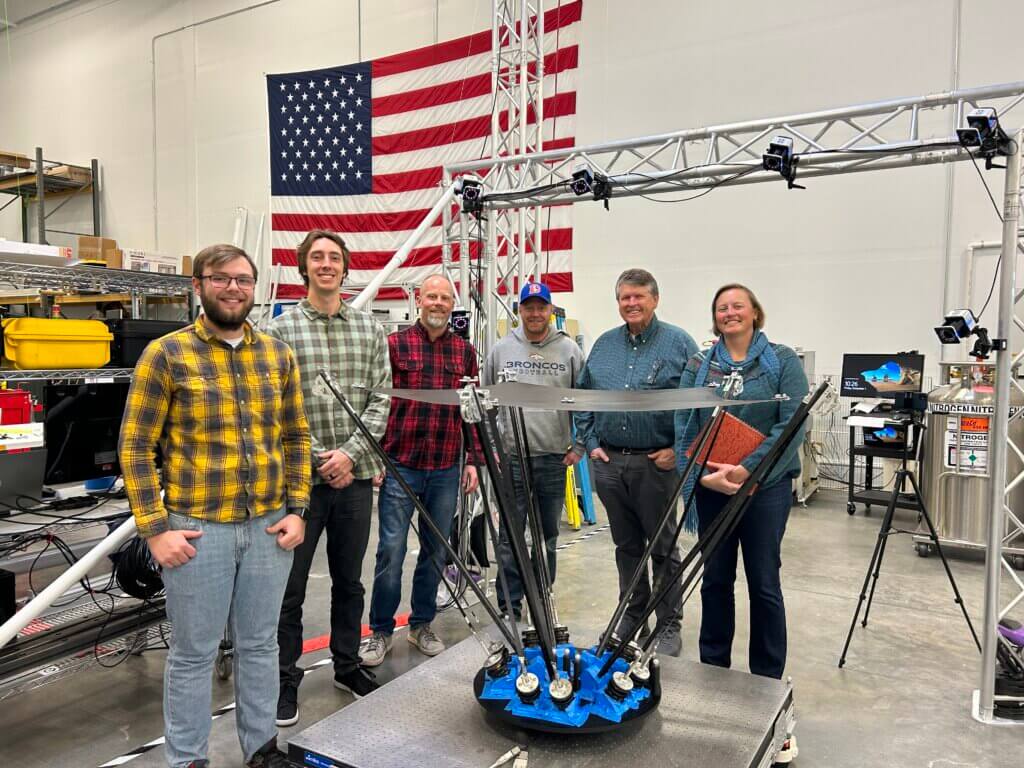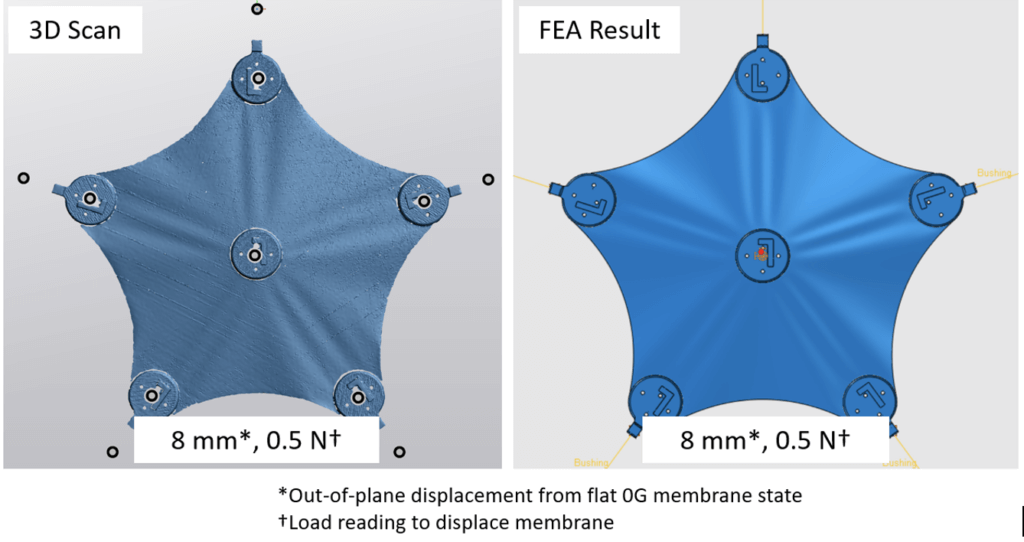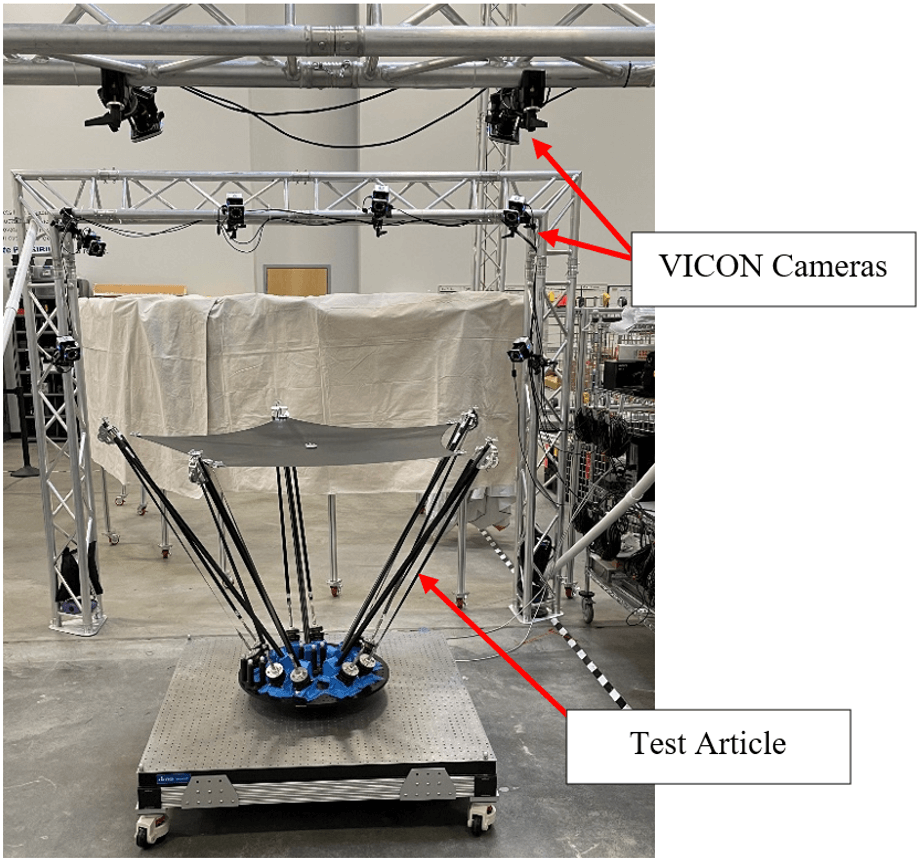
At 6 meters tall with a 7 meter aperture, MMA’s Meta Lens antenna in development for NASA’s Global L-band Active/Passive Observatory for Water Cycle Studies (GLOWS) mission is more than double the size of any other membrane deployable antenna MMA has flown to date. Additionally, once deployed, the entire antenna system spins on orbit at a rate of approximately 15 rpm.
What is the dynamic response of such a large, spinning structure? Answering this question is essential to assuring mission success. Given the complexity and scale of this system, and objective of keeping cost to a minimum, ground-testing including full scale spin testing is not feasible. Instead, MMA Design is predicting the response of this system using advanced finite element analysis (FEA).
Modeling this system is non-trivial for multiple reasons. The thin-film membrane layers comprising the Meta Lens are inherently structurally unstable. The high-strain composite booms that support the lens are thin shell structures that must be carefully designed to be strong enough to adequately tension the lens. And finally, MMA Design’s connections between the tips of these booms and membrane layers require specialized elements capturing the unique kinematics of these features. Thus, MMA Design has advanced our FEA capabilities in order to model these very complex, large deployable systems for determining stiffness and 1st mode frequency.
For validating our GLOWS system models, MMA Design has built a series of scaled models, including a 1/6 scale prototype that spins, just like the full size antenna system. The response of the spinning scaled-down prototype is measured using our Vicon motion capture system and compared to MMA Design’s modeled response. Initial testing has demonstrated close correlation between these models and our test articles, validating the approach for full scale system modeling.

MMA Design’s experimentally measured thin film membrane out-of-plane displacement response (left) and FEA result (right).
For more information, check out MMA Design’s upcoming paper at AIAA SCITECH covering this effort entitled “Finite Element Model Correlation for Deployable High Strain Fiber Reinforced Composite Boom and Membrane Antenna System”.

1/6 scaled spinning GLOWS system test article and overhead VICON dynamic measurement system.



